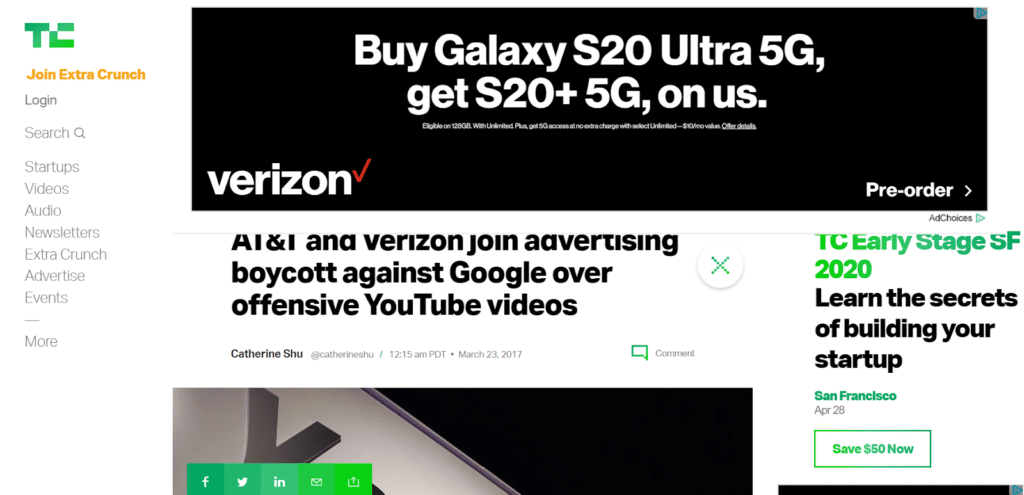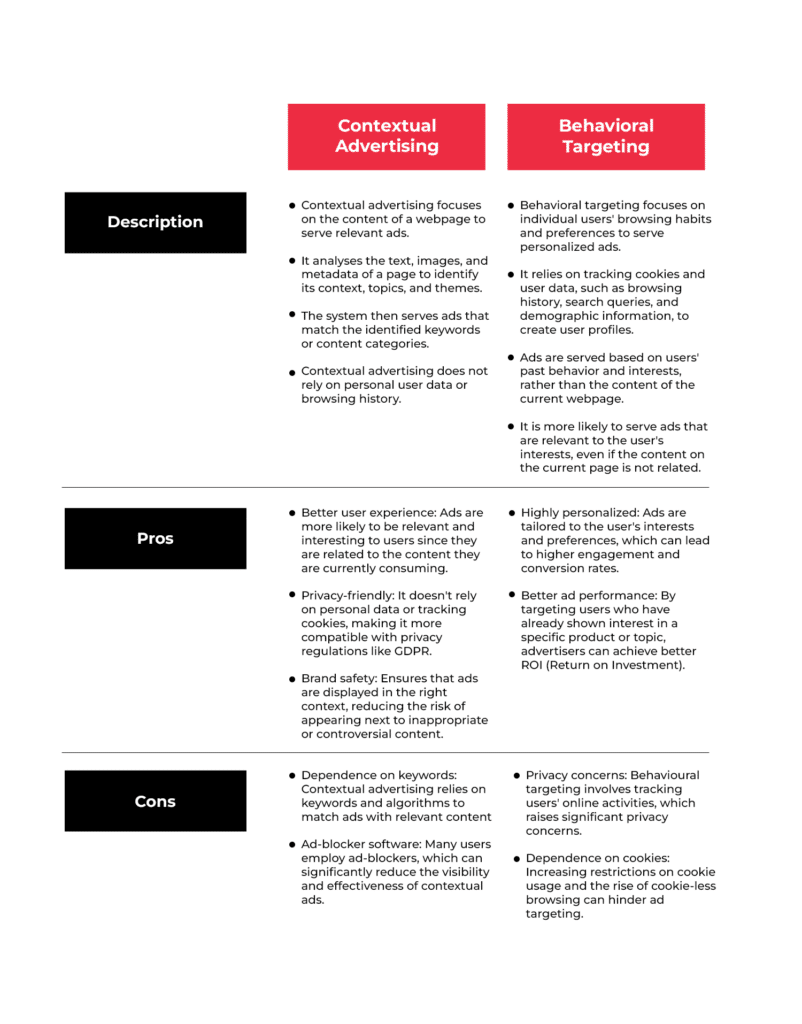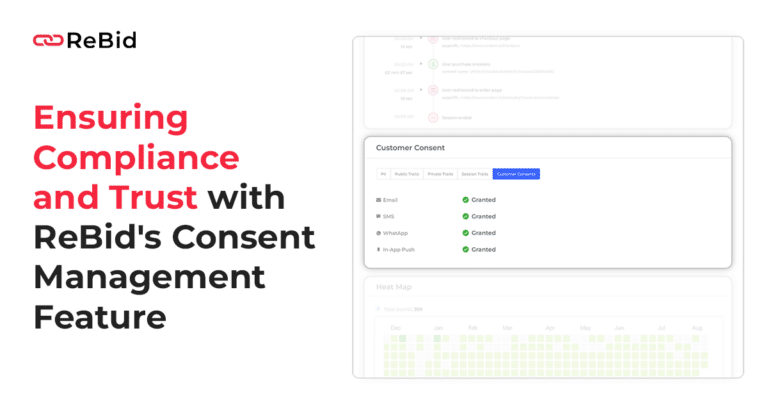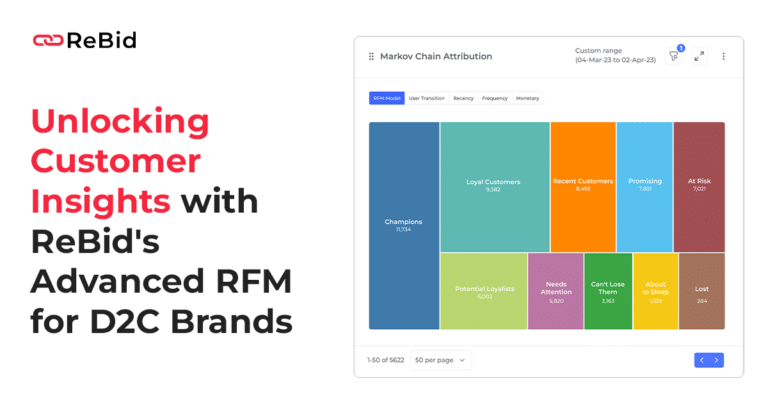As the use of third-party cookies declines, it will become increasingly challenging for advertisers to deliver relevant and personalized ads to their target audience. Without the ability to track users’ online behavior, advertisers will have limited access to valuable user data that has been previously used to inform ad targeting and personalization efforts. This means that advertisers will need to adapt and find new ways to reach and engage their audience. With increased worries about data privacy and monitoring, contextual advertising is developing as a powerful alternative that delivers relevance without tracking.
Before we delve into how contextual advertising can help combat the cookieless future, it’s important to first completely understand what contextual advertising entails. address the elephant in the room.
What is Contextual Advertising?
Contextual advertising targets people based on the content they are watching or engaging with rather than utilizing demographic data or other tracking-based targeting approaches. By presenting advertisements that are incredibly relevant to the content that a user is reading or interacting with, contextual advertising can provide a more seamless and enjoyable user experience while also safeguarding user privacy. Contextual advertising has been shown to improve ad effectiveness, with studies suggesting that contextually relevant ads can increase purchase intent by 63% and brand awareness by 34%. Here is an example:

Image source: verizon
Let’s further breakdown down how contextual advertising works:
Content analysis: When a user visits a web page, the contextual advertising system analyses the page’s content by examining its text, images, and metadata. The system uses natural language processing (NLP) and machine learning algorithms to understand the context, topics, and themes of the page.
Keyword identification: The system identifies keywords and phrases related to the page’s content. These keywords serve as a basis for matching ads to the page. For example, if the content is about fitness, keywords might include “exercise,” “gym,” “workout,” and “running.”
Ad selection: Once the system has identified relevant keywords, it searches its ad inventory to find ads that match those keywords. The ad inventory is a database of advertisements provided by advertisers, who specify the keywords they want to target. Advertisers bid on these keywords to determine the ad’s placement and cost.
Ad placement: The contextual advertising system chooses the most relevant and highest bidding ads to display on the webpage. It can display the ads in various formats, such as banners, native ads, or video ads, depending on the website’s design and the advertiser’s preferences.
User engagement: When a user interacts with the ad (by clicking, viewing, or making a purchase), the advertiser is charged based on the agreed-upon pricing model. Common pricing models include cost per click (CPC), cost per view (CPV), or cost per action (CPA).
Now that the basics of contextual advertising is clear. Let’s dive deep into the advantages of it, how it operates, and why it’s significant in the world of online advertising.
Why Contextual Advertising is a Game-Changer for Your Advertising Strategy
Contextual advertising provides advertisers with the opportunity to provide advertisements that are extremely relevant to the content that a user is viewing or interacting with, without relying on tracking or user data. Users are more inclined to interact with advertisements that are relevant to their interests and requirements, which can assist to increase engagement and conversion rates.
Additionally, contextual advertising has the benefit of addressing concerns with data privacy and monitoring. No user information is acquired or recorded because contextual advertising only displays advertisements depending on the content that a user is reading or interacting with. This can help ease concerns about data privacy and provide a more trustworthy and open user interface.
For instance, if a user is reading a website about hiking, a contextual advertising system may examine the page’s content to find keywords and other pertinent details regarding hiking. After that, it would show advertisements for hiking-related products, including boots or outdoor gear.
Along with providing more relevant and valuable ads to viewers, it is also:
- Cost-effective: Contextual advertising is often more cost-effective than other forms of advertising because advertisers only pay for clicks or impressions on ads that are displayed on relevant content. This means that advertisers can target their audience more precisely and get better value for their advertising spend.
- Higher conversion rates: Contextual advertising can result in higher conversion rates because users are more likely to be interested in the product or service being advertised if it is relevant to the content they are viewing. This means that advertisers can generate more sales or leads from their advertising campaigns.
- Non-intrusive: Contextual advertising is less intrusive than other forms of advertising because the ads are displayed within the content that users are already viewing. This means that users are more likely to engage with the ads and less likely to feel annoyed or interrupted by them.
The battle between contextual advertising and behavioral advertising. Which one is better?
Contextual advertising and behavioral targeting are two different methods used to deliver personalized ads to users. While both approaches aim to increase ad relevance and effectiveness, they rely on different data sources and targeting strategies. Let’s explore the differences between the two and discuss their advantages and disadvantages to determine which one might be better depending on the situation.

It’s time to be more relevant at scale with ReBid
ReBid is a powerful advertising data platform that can help advertisers maximize the potential of contextual advertising by leveraging the Google Display Network (GDN) and multiple programmatic advertising channels, all from a SINGLE DASHBOARD. By providing access to these extensive networks, ReBid enables advertisers to reach a wide range of audiences, delivering more relevant and targeted ads that resonate with users.
And that’s just the beginning!
ReBid also provides comprehensive analytics across your Google Display & Programmatic Campaigns that help advertisers track & compare the performance of their contextual ad campaigns. Along with monitoring crucial KPIs, to optimize their campaigns, advertisers can leverage ReBid’s GPT Based AI Assistant for smart bidding, real-time optimization capabilities, and smart recommendations to drive more ROAS from their campaigns across your Google Display & Programmatic Campaigns all from a single dashboard!





